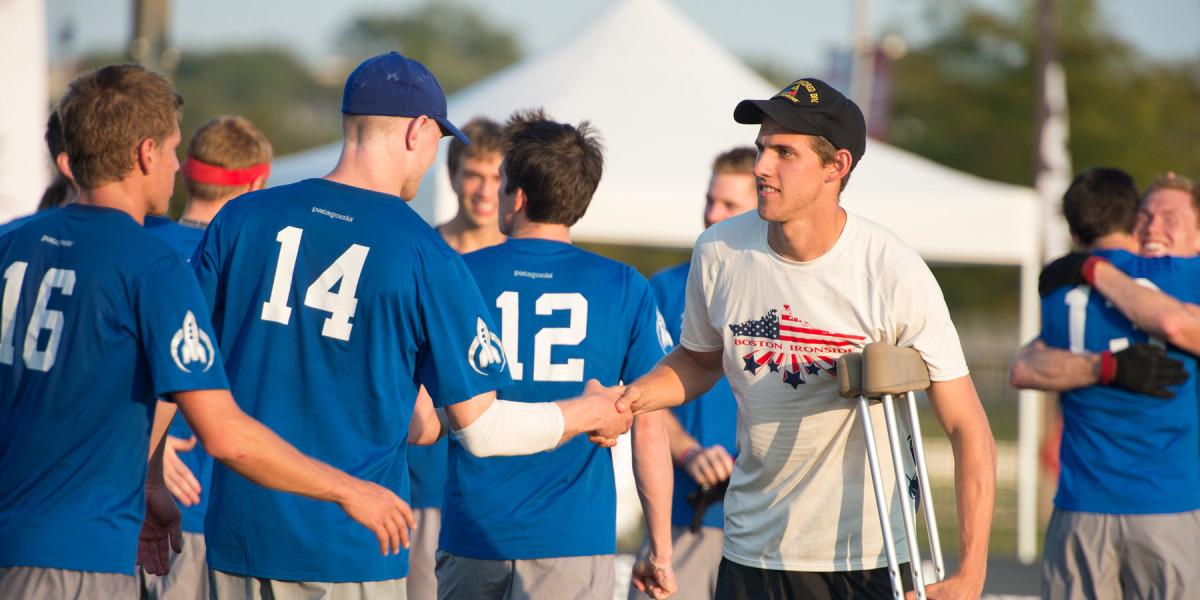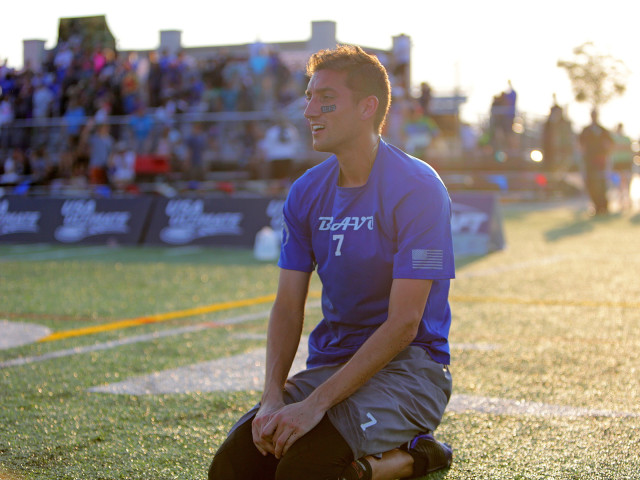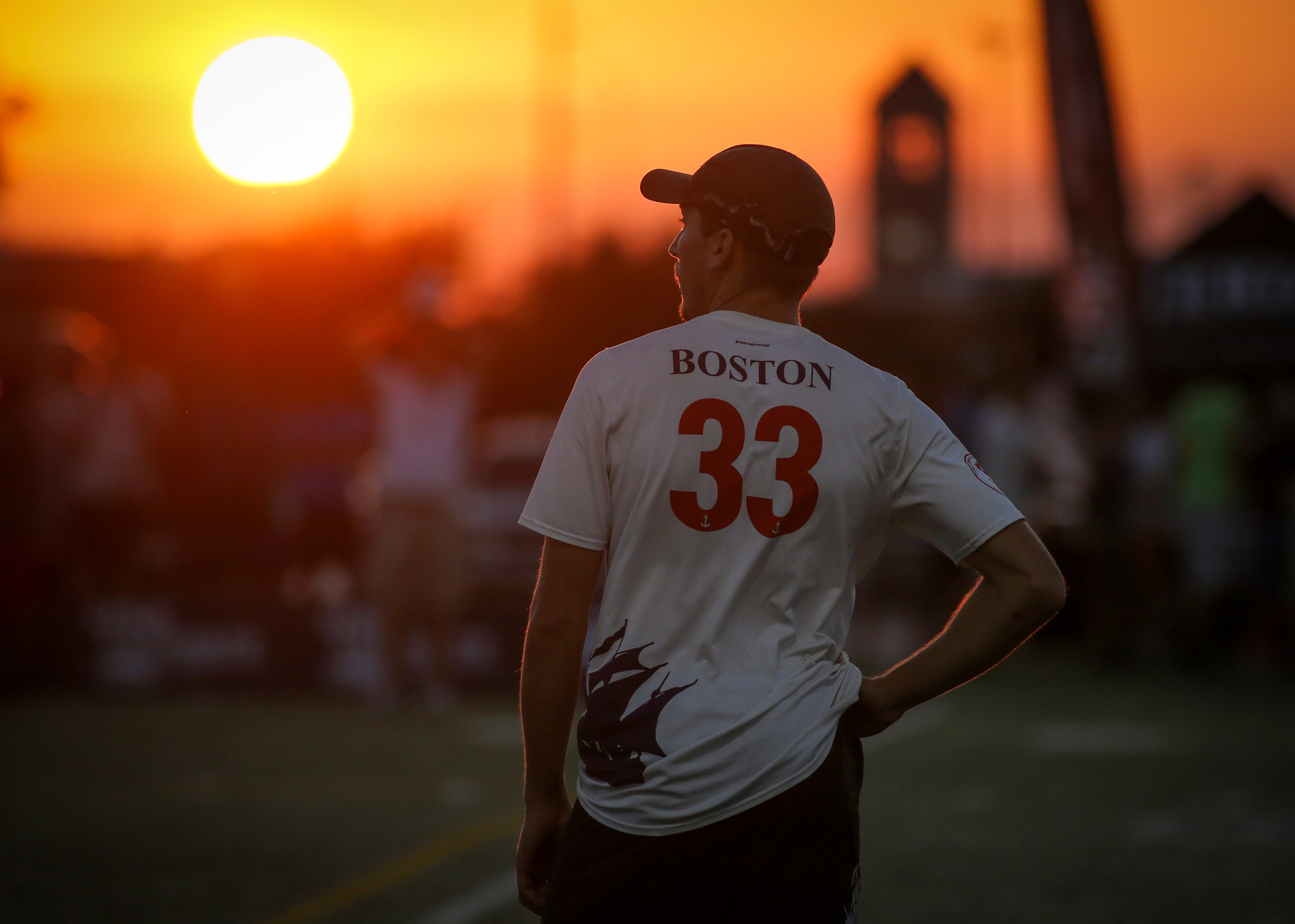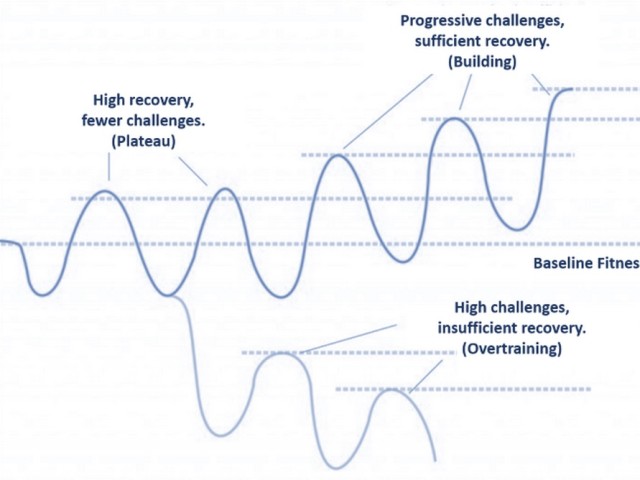 Jolie Lang - UltiPhotos.com
Jolie Lang - UltiPhotos.com
In part 4 of this 6-part series, Brent Steepe, personal trainer of 22 years, challenges you to give your body exactly what it needs, including recovery and an ideal place to train, sleep, and eat.
It’s gym day, again, and you’ve just finished your 7th consecutive daily 5 mile run. You follow that with yoga class because you heard cross-training was good, then on to spinning for more endurance work. Hit the pool, then back to the fields for suicide runs and cutting drills. You’ve studied hard, spent countless hours learning up on fitness information, and maybe even hired a personal trainer or two, only to find that the “bigger, better, faster, stronger” approach to fitness isn’t working for you. Pause your movement long enough to consider why that is and you’ll come to the same conclusion others have: you are overtraining. The stresses on your body have exceeded its capacity for repair and recovery, putting you on a dangerous road.
Characteristics of Overtraining
Overtraining is an unpleasant idea, and some people think it’s restricted to your body’s mechanical performance. When the body’s systems can no longer keep up, athletes experience more than just difficulty performing workouts. Symptoms can range from inability to recover sufficiently between workouts all the way up to chronic fatigue and repetitive strain injuries. The risk of overtraining is often underestimated, and overtraining limits long-term health as well as performance. The good news is, you can avoid it by exploring effective recovery and learning to design a balanced training regimen.
Recovery is about allowing the body to return to a normal state of operations after training. It is directly related to your nutrition, hydration, and rest corresponding to each type of training activity. An equation like [Activity/(Hydration+Nutrition)]*Rest=Recovery might be more complicated than necessary. Recovery is actually simple; you just have to listen to your body. The following are warning signs that you have neglected one or more of your body’s basic requirements: hydration, nutrition, activity, and rest.
- Your joints hurt, not just the surrounding musculature. Not a little stiff or slightly sore: they ache badly, and have been misused.
- You are constantly excitable and unable to sleep. Your sympathetic nervous system (the one that accelerates heart rate, increases blood pressure, and constricts blood vessels) is stressed, and your focus is difficult to maintain.
- You are losing muscle or gaining fat despite exercise. People forget that exercise is not just a game of contractions, it is about hormones as well. Too much exercise has been shown to reduce testosterone and increase cortisol levels, spelling potential muscle loss and fat gain.
- Your emotions are shot. Chronic fatigue, moodiness, and irritated, unenthusiastic behavior are textbook signs that you have not prepared the right recovery plan.
- Past mechanical/muscular injuries are back, and you cannot seem to stay away from illness.
Rest is More than Just Sleep, and Sleep by Itself is Not Enough
The body can only execute to its full potential when it has had the proper resources to completely recover from your training activities, especially after long multi-game weekends. Our immediate response to excessive exertion is to curl up in a ball on the nearest couch or bed, but your body needs more than that. Let’s take a moment to reflect on the signals we sent to the body during our tournament weekend. For two days you were in constant motion, working your body to its limits. Your body’s metabolism doesn’t stop the moment you walk off of the field; neither does the energy exchange in your muscles, nor the toxins and other byproducts of those exchanges.
Truth be told, toxins are being released into your system for many hours after a workout or contest, and your body has to take the necessary time to allow these byproducts to be chemically processed, not just “removed’ or “flushed” as commonly thought. Things like proper hydration and a balanced diet help with the chemistry, but the most critical factor is the appropriate time of light/normal body activity and correctly aligned rest/sleep between your intense exercise periods. Remember that each muscle system for your extremities acts as a pump to assist in the chemical removal process, which is why light activity like muscular retensioning (e.g. stretching, or getting a massage) and mechanically correct posture are found in all of the best athletic programs.

Alex Fraser – UltiPhotos.com
We Know the “Why”, Time to Set the “Where”
The phrase “product of your environment” applies as much to rest and recovery as it does to food. As previously discussed in the article on nutrition, the food we eat is only as rich in nutrients as the ground in which it grows. The same concept applies to rest. You must stage your environment for proper recovery each and every day.
In the age of cell phones and TV, it is common to fall asleep with sound, noise, and light distractions. Despite this, research in sleep cycle analysis has demonstrated that we all have different needs in our sleep environment, based on the 5 senses:
Touch: Temperature of the room, mattress, and pillows
Sight: Light, electronics use, television
Sound: White noise, family, pets
Smell: Allergies, essential oils, fabric softeners/detergents
Taste: Food, alcohol, and caffeine
Each person becomes accustomed to a degree of these stimuli in their recovery cycle. However, many do not try the simplest approach, which is to rest a few nights with no stimuli at all (or, if you have children, as few as life will allow). Are you not sleeping well? Is it taking your longer than usual to recovery from your workouts? Check out the list above and see what you might have changed. Even something as simple as your detergent could be the culprit.

Christina Schmidt – UltiPhotos.com
Environment is Not Just for Recovery
Bright colors, sunlight, sky, fresh air, open space–does anyone feel like playing ultimate yet? If so, you may not realize that part of your attraction to this amazing game is the environment in which you play. If you disagree, re-read the first sentence and compare it to this one: plain walls, fluorescent lights, recycled air, and small cube offices. Where would you rather spend your day?
Studies show that your body’s efficiency increases when introduced to a more enjoyable environment. Whether you need special flooring to prevent injury in the gym or better shoes to train on the field, remember that each adaptation you make to improve your environment will translate to results. This extends to off of the field as well. Look at your surroundings and, as appropriate, try cleaning your workspace. Introduce a brightly-colored or LED light to your gym or study area, reduce electronics use during family time, and generally remove distractions from your tasks. Create an environment that encourages laser-like focus in this world of mirrors and your stress levels will decrease while your efficiency improves. Paired with the nutrition and training information addressed in previous articles, you should be seeing great strides in your overall health!











Comments Policy: At Skyd, we value all legitimate contributions to the discussion of ultimate. However, please ensure your input is respectful. Hateful, slanderous, or disrespectful comments will be deleted. For grammatical, factual, and typographic errors, instead of leaving a comment, please e-mail our editors directly at editors [at] skydmagazine.com.